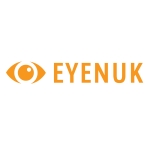German Diabetes Clinic Increases Diabetic Retinopathy Screenings From Zero to Thousands After Implementing Eyenuk’s EyeArt AI Eye Screening System

EyeArt® AI Screening System Automatically Identifies Referable
Diabetic Retinopathy in Patients with Diabetes, Improving Patient
Compliance and Saving Vision
LOS ANGELES–(BUSINESS WIRE)–Eyenuk
Inc., a global artificial intelligence (AI) medical technology and
services company and the leader in real-world applications for AI Eye
Screening™, announced today results of its expansion into Germany. Since
adopting the EyeArt
AI Eye Screening System in October 2018, Diabetes
Center Mergentheim has screened thousands of diabetic patients,
identifying approximately 10% with cases of referable diabetic
retinopathy (DR). The center is the first dedicated diabetic clinic in
Germany to use artificial intelligence for screening of diabetic
retinopathy, the leading cause of vision loss in working-age adults.1
The EyeArt AI Eye Screening System makes in-clinic, real-time DR
screening possible for any physician, enabling quick and accurate
identification of patients with referable DR during a diabetic patient’s
regular physician visit. Once the patient’s fundus images have been
captured and submitted to the EyeArt System, the DR screening results
are available to view and export to a PDF report in less than 60
seconds. The EyeArt System can free eye care specialists to focus on
sight-saving treatment rather than screening for DR.
At Diabetes Center Mergentheim, more than 20,000 patients with diabetes
are seen each year by diabetes care specialists. Before adopting the
EyeArt System, patients would be referred to ophthalmologists outside of
the clinic. This process placed undue burden on patients, and often they
would never get the necessary screening.
“EyeArt AI Eye Screening System is helping us improve diabetic patient
care. We can now offer eye screening right in our clinic, without
dilation, while reducing wait time for screening and results,” said
Prof. Dr. med. Thomas Haak, head physician of Diabetes Center
Mergentheim and founding member and board director of DiabetesDE. “The
accuracy and convenience of the EyeArt System is allowing us to identify
and treat DR effectively and quickly. The patients with no referable DR
feel good that they can be screened again in a year, and the patients
with identified referable DR can feel good that their silently
progressing retinopathy has been identified and will be treated before
any loss of sight.”
About 7.5 million people in Germany have diabetes mellitus2,
with over 2,500 patients going blind due to diabetic retinopathy each
year. German guidelines recommend at-risk patients be screened annually,
but this can be difficult with the shortage of eye doctors. By
incorporating the EyeArt System into their clinic, Diabetes Center
Mergentheim has addressed a serious complication associated with
diabetes — the center now screens 10 to 15 patients per day for this
vision-threatening condition.
“Last year, we began our partnership with Diabetes Center Mergentheim
with a great promise, and now it is very gratifying to see the promise
turning into real meaningful impact that EyeArt System’s adoption is
making to the diabetes patients in the Bad Mergentheim community,” said
Kaushal Solanki, founder and CEO of Eyenuk. “We are now replicating our
success to clinics throughout Germany, taking us one more step further
in realizing our mission to screen every eye in the world.”
About Diabetic Retinopathy (DR)
DR is a complication of diabetes caused by damage to the blood vessels
of the light-sensitive tissue at the back of the eye (retina). It is a
silently progressing disease that at first may cause no symptoms or only
mild vision problems. Eventually, it can cause blindness. The condition
can develop in anyone who has type 1 or type 2 diabetes.3 It
is estimated that one-third of all patients with diabetes will develop
DR,4 making it the leading cause of vision loss in
working-age adults.5
While DR screening is recommended for all diabetic patients, less than
half get screened annually1, even in the developed world.
Since diabetic patients outnumber ophthalmologists by 1,130 to 1 in
Germany6, there are just not enough eye care specialists to
meet the DR screening needs of the growing diabetic population. Even for
those receiving an annual screening, ophthalmology appointment wait
times for DR screening can be weeks or even months.
About the EyeArt AI Eye Screening System
The EyeArt AI Eye Screening System is the most extensively validated AI
technology for autonomous detection of DR, tested in the real world on
more than a half million patient visits globally with over 2 million
images collected in real-world clinical environments. The EyeArt System
was developed with funding from the U.S. National Institutes of Health
(NIH) and is validated by the U.K. National Health Service (NHS). The
EyeArt System has CE marking in the European Union and a Health Canada
license. In the U.S., the EyeArt System is limited by federal law to
investigational use.
About Eyenuk Inc.
Eyenuk Inc. is a global artificial intelligence (AI) medical technology
and services company and the leader in real-world AI Eye Screening™ for
autonomous disease detection and AI Predictive Biomarkers™ for risk
assessment and disease surveillance. Eyenuk is on a mission to screen
every eye in the world to ensure timely diagnosis of life- and
vision-threatening diseases, including diabetic retinopathy, glaucoma,
age-related macular degeneration, stroke risk, cardiovascular risk and
Alzheimer’s disease.
EyeArt is a registered trademark of Eyenuk Inc.
____________________
| 1 |
Prokofyeva E, Zrenner E. Epidemiology of major eye diseases leading to blindness in Europe: a literature review. Ophthalmic Research. 2012;47:171-188. doi: 10.1159/000329603 |
|
| 2 |
International Diabetes Federation (2017) IDF Diabetes Atlas, 8th |
|
| 3 |
https://www.mayoclinic.org/diseases-conditions/diabetic-retinopathy/symptoms-causes/syc-20371611 |
|
| 4 |
Yau JW, Rogers SL, Kawasaki R, et al. Global prevalence and major risk factors of diabetic retinopathy. Diabetes Care. 2012;35:556-64. doi: 10.2337/dc11-1909 |
|
| 5 |
Prokofyeva E, Zrenner E. Epidemiology of major eye diseases leading to blindness in Europe: a literature review. Ophthalmic Research. 2012;47:171-188. doi: 10.1159/000329603 |
|
| 6 |
Contacts
Media Contact:
Capwell Communications
Ida Yenney
ida@capwellcomm.com
949-999-3303
